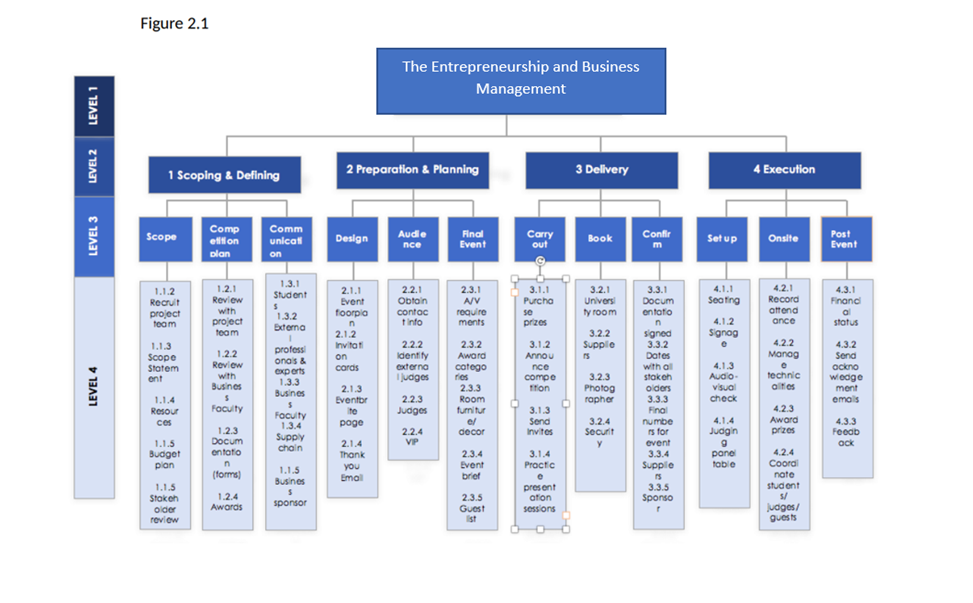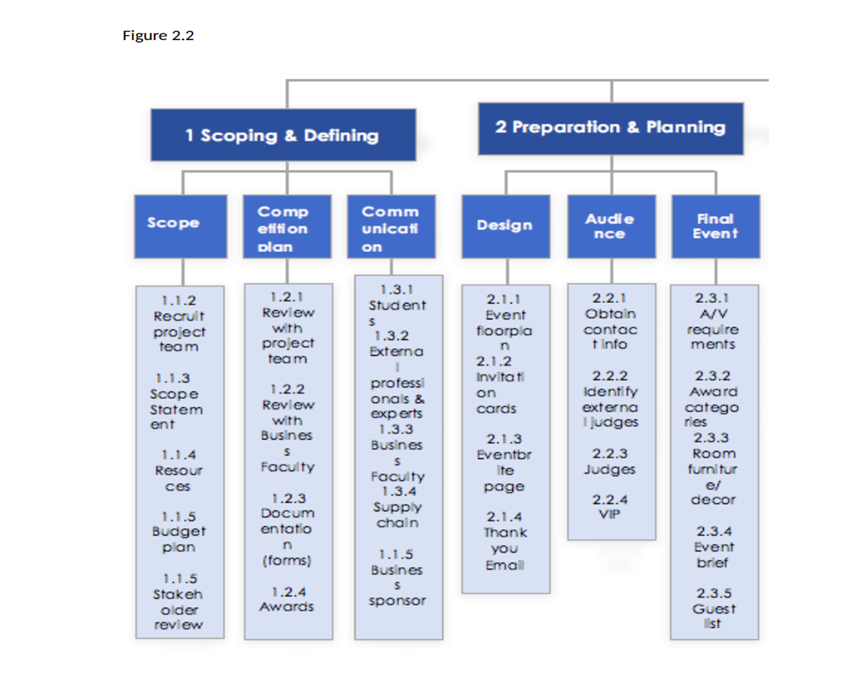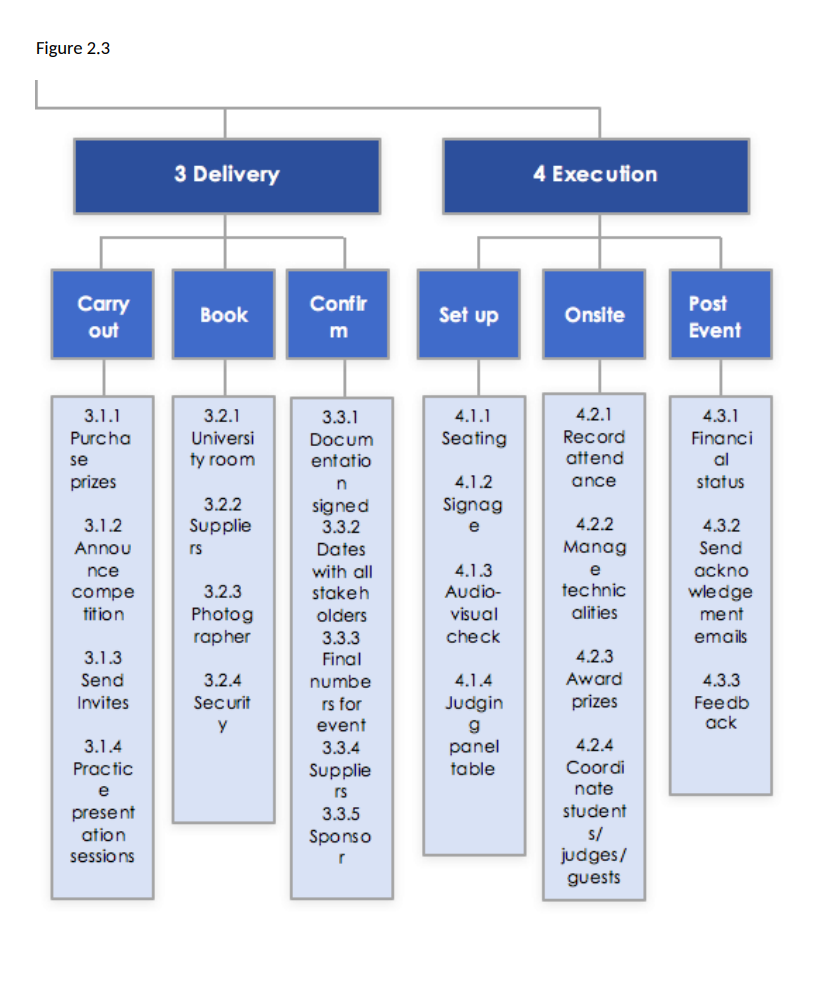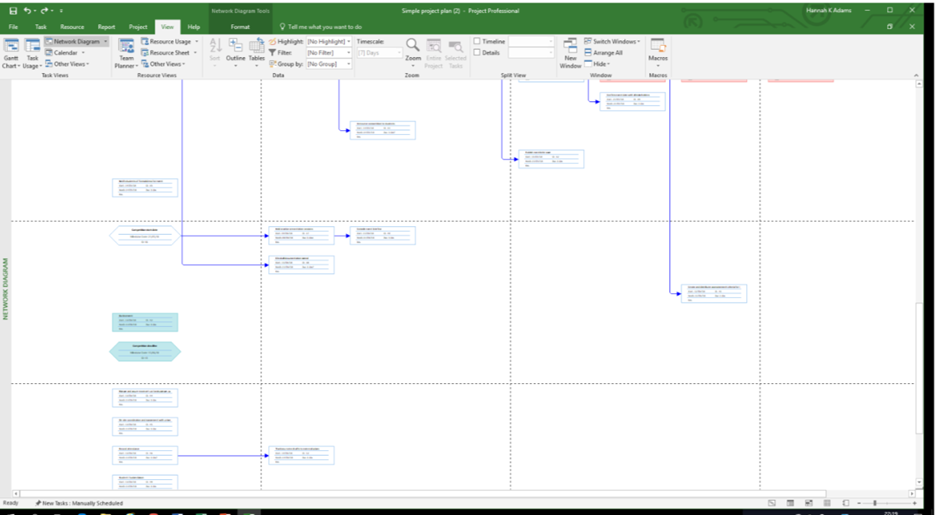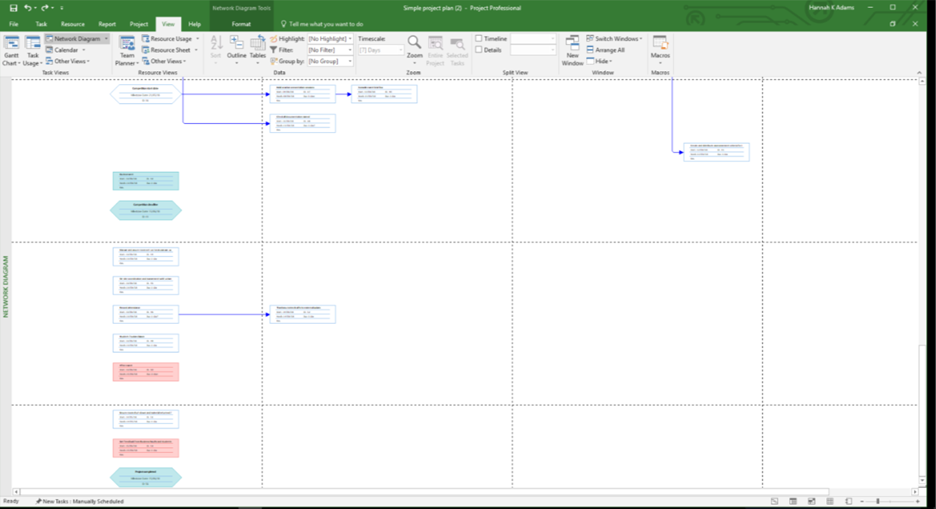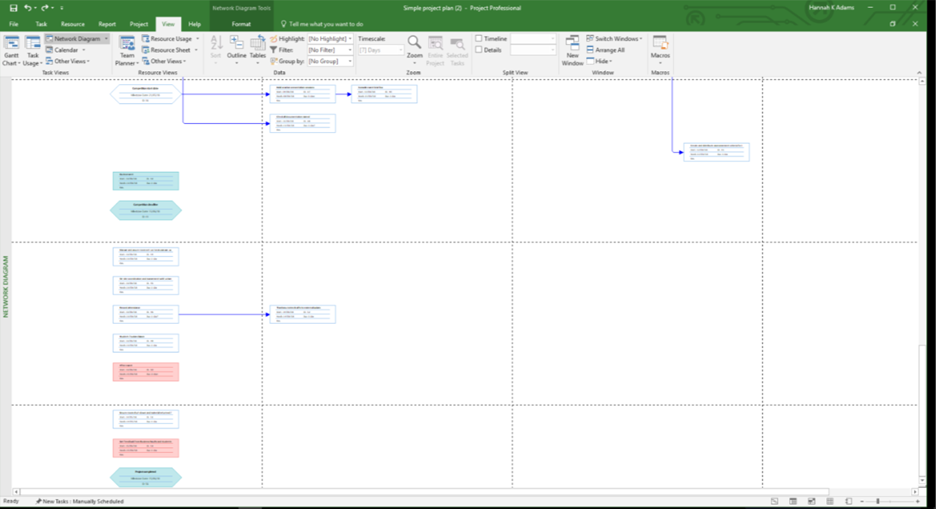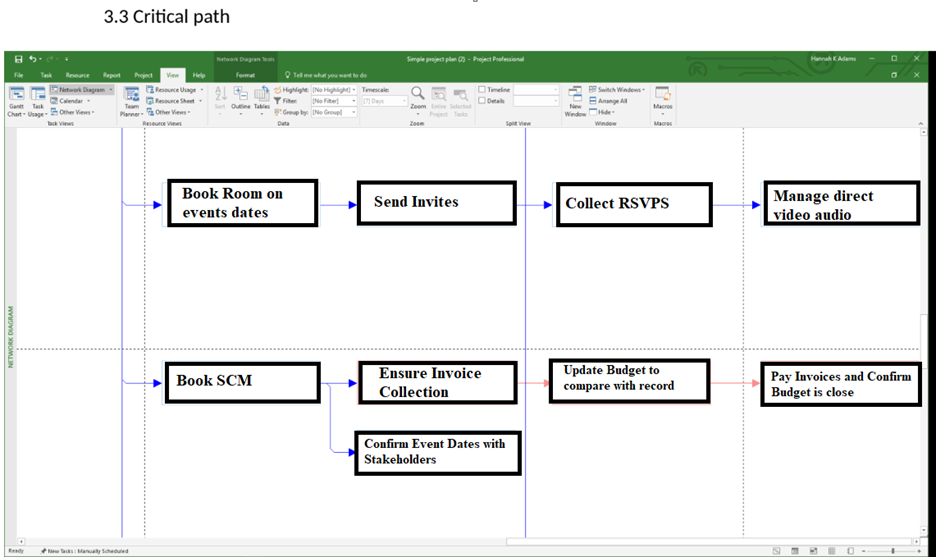Task 1 Project Objectives, deliverables, and Milestones
Project Name; The Entrepreneurship and Business Management
Project Objectives; Entrepreneurship and Business Management convention could be administered beneath the route of Greenwich University`s Faculty of Business. Students could be requested to interact with the subject of Entrepreneurship and Business Management thru this convention. In groups, broaden and deliver a presentation. The Entrepreneurship and Business Management conference is a convention for aspiring enterprise leaders. All college students with inside the Business Strategy elegance can have to get entry to it. At the center of it all, offer a way for college students to assist each other and broaden their experience of the community. An occasion could be organized to finish the convention, in which the Presenters will gift their work. Academic experts from outdoor the college could be a gift for this occasion. Universities and enterprise professionals from outdoor industries are inclined to adjudicate the opposition in addition to offering feedback. Include rewards for the fine thoughts inside the awarding ceremony, in addition to the opportunity of a summertime season internship with a nearby firm. Over 60 days, complete entire the project. days from April 9th to June 15th, 2022 even as staying beneath £8,000 finances Increases the visibility of the Greenwich Business Faculty throughout campus.
Deliverables; On behalf of the Faculty of Business, to successfully manage the Entrepreneurship and Business Management Academic Conference. On the day of the presentations, we will have our work evaluated by a panel of academics and business experts. Allow students to display their work in a final event, followed by an awards ceremony.
Technical Requirements; Catering services, photographer, security, and décor vendors are all included in the budget for equipment rental and labor.
Funding: For this year, the Business Faculty has made discretionary funds accessible in their account. The £8,000 connected with all charges will be covered.
Sponsorship: To cover the first-place prize, we’ll locate a company prepared to grant each of the winning teams a summer internship. They will receive campus-wide publicity in exchange for their name appearing on the Eventbrite page as well as all invitation/acknowledgment materials for the event.
Project Milestone; Accessibility, lighting control, emergency exits, and safety standards are all available at the University of Greenwich’s lecture theatre with the break-out room.
Floor plan for the event:
Space requirements for audiovisual and décor
Requirements for Computers and Software
| Project Milestones | Date |
| Start of the project | 9th April 2022 |
| Forms and documentation for the competition | |
| Forms & Documentation for competition | |
| Obtain sponsorship for a business for the internship award | |
| Prepare a list of potential external guests to invite | |
| Booking a hotel for the event | |
| Booking a hotel for the event | |
| Determine the competition’s prizes and announce them to the Business | |
| Strategy class competition’s start date. | |
| Deadline for competition and receiving final materials 2:30 PM | |
| Hold an event | 13th June 2022 |
| Post Event | 14th June 2022 |
| Project Completion | 15th June 2022 |
Limitations of the Project; The project must be done within the budget of £8,000. Due to the university’s summer break, the competition presentations and award ceremony will be held on June 13, 2022. The competition shall adhere to the University of Greenwich’s rules and regulations. Invitations should be sent by the end of May when the Business Faculty has reviewed and approved them. Time constraints, available resources, and staff limits will all be considered. The Faculty of Business will support the project and respond to inquiries promptly. The project team will not be reassigned and will remain focused on this project. To support this project, members of the project team will be backfilled as needed. Sponsorship will be offered for revisions that have been authorized.
Task 2 WBS
Within the scope of the knowledge management domain, WBS is a project management technique that allows project managers to characterize their scope of work (Burke, 2013). It shows the work and preliminary deliverables needed to meet the expectations of the key tasks identified throughout the definition phase of the organization. In most cases, WBSs reflect the components of previous expectations and the methods used to create, organize, and approve them. Create organized images to see all the work needed to reach the goals of the project (Schwalbe, 2009). Work breakdowns (WBS) are one of the most important tools for project managers because they provide the basis for task identification and isolation (Packendorff, 1995). Work to produce the desired results is structured, defined, booked, tracked, and reported using WBS. When the work of the project is successfully communicated to all stakeholders, the work of the project is possible as a result. The next milestone will be achieved with a well-made PSP. There are ways to manage projects of all sizes (Diallo, 2005)
As part of my technique, I had to think about where I could find a PSP template to start the disassembly process. We looked at the scope statement to see key findings and project approaches. I used the “Iron Triangle” to break down the PSP into sub-components for time, quality and cost. Consider how the results will be achieved and which approach to use. When creating the WBS, I also had to answer the following questions: How can you ensure acceptable quality of results while estimating cost and timeliness at this level of detail? The entire scope of my project was decomposed into its components using my PSP function decomposition. After that, I was able to create a model of what I needed to deploy. I started with Level 1, the competition of future business leaders, and then proceeded to reasonable level details. I monitored the project from start to finish and rechecked all the features to make sure they were working properly. This gave me a better understanding of the relationships between tasks.
Task 3 Gannt Chart
Both Gantt charts and network diagrams are unique project management tools. According to Burke (2013), the Gantt chart is a bar graph of planned dates, including activity periods on the vertical axis, dates on the horizontal axis, and activity periods with start and end dates indicated by horizontal bars (Tsiaousi, 2012). Gantt charts are the most commonly used tools for organizing and controlling records that convey planning data (Xuan, 2019). Not only is it easy for stakeholders to understand and process, but it also creates effective presentations that accurately convey planning and scheduling data. They are easy to understand, include WBS, and are useful because they show actual progress and estimates (Burke, 2013). The first step in recognizing the critical path method is to draw a network diagram (Kelley Jr, 1961). Tasks are displayed as nodes, and links between tasks are shown as lines connecting the nodes, unlike Gantt charts. Each activity node has date information tied to it, and each node has several dates associated with it. As a result, in order to properly manage their projects, project managers must understand the characteristics of these methodologies.
Using the MS Project software, I created Gantt charts and network diagrams by editing task lists, estimating activity duration, creating work calendars, setting activity dependencies, and setting start dates. By using this software, I was able to extend the WBS and understand the relationships between activities. I left auto links enabled because Project needs to automatically create ancestor links between tasks. As I learned, the assignments were on time, so I could add them as needed. I also used this software to create a Gantt chart. This allowed us to systematically pay attention to the details of the activity and graph it. The benefits of creating a network diagram using this program included the fact that it clearly defined one important path for me and showed the workflow of the project (Cross, 2003). This was supported by the MS Project software, which provided the option to shorten the timeline. Overall, the program helped document my project by developing these two paths and clearly explaining the planning prerequisites.
The critical path is a method of planning and managing an initiative that consists of a set of tasks, which extends the end date of the plan if any task is delayed (Ahuja, 1994). It also provides a structured way to view a set of activities in a network diagram (Burke, 2013). As mentioned earlier, drawing a network diagram is the first step in calculating the critical path. Defines a logical framework for graphical analysis. In addition, create a schedule that includes the date and duration of the activity. In the third stage, the forward and reverse paths are calculated to establish the activity’s start and end dates According to the author, “the final phase in the process is to calculate the activity float and establish the critical path” (Burke, 2013). The zero-float activity can be seen on the important path in this graph. This means that any one of these processes will cause the entire project to be delayed.
Task 4 Managing Stakeholders
There are various concerns to consider when implementing a project, especially when it comes to events. What is called a stakeholder is a representative of these interests (Boonstra, 2006). To effectively manage a venture partner, you need to understand the stakeholder requirements. According to Burke (2013), stakeholders are “individuals, groups, or organizations that influence, affect, or believe in project decisions, actions, or outcomes.” Most projects have a variety of stakeholders with competing interests that can have a significant impact on the ultimate success or failure of the project (Grimble, 1997). Based on the impact, there are three types of stakeholders: primary, secondary, and key. The main stakeholders are individuals or groups that are adversely or positively affected by the project. Project managers, customers, owners, project teams, sponsors, implementing organizations, suppliers, and stakeholders are often the main stakeholders of a project. To find these stakeholders, you first need to explain them. An execution organization is an organization in which employees are involved in project management. Secondary stakeholders, on the other hand, are intermediaries or individuals or groups that are indirectly affected by project activities. The audience for the event may be a secondary stakeholder. Finally, the most important are the main actors. This group can also be included in the first two groups. You have a great influence on any effort. Stakeholder analysis is a strategy that helps identify the stakeholders in your project. This analysis is supported in the next phase. First of all, I identify internal and external stakeholders and explain their purpose and importance.
| Project Patron | This stakeholder offers project funds to my project team. They are the project’s budget owners and the most important stakeholder and recipients of project deliverables. External professionals and business gurus are on the guestlist for the event. Various components of the project require approval. |
| Chief Student (Project Manager) | will be in charge of the project’s overall management. This means I’ll be in charge of creating, maintaining, and managing the WBS, as well as procuring resources and allocating tasks. |
| The owner (Greenwich University) | My project team receives policy definitions from the university on paperwork, rules, and safety procedures.
Sets official decisions and resolves conflicts or challenges related to extending wishes across authorized and helpful sectors. For any communication, the business faculty and I will have a direct line. I will work directly with the institution as a project manager on all policy clarifications. |
| Spokesperson or Representative | Effort and ensure the project’s effective completion All members of the project team will report to me. I’ll be in charge of all project administrative tasks, as well as interacting with project sponsors and participants. I’ll also be responsible for the project’s overall success. |
| Supply Chain Manager | External food services, A/V, and décor companies will make up the supply chain. Emergency services, safety, and security may also be included. Canapes and refreshments will be provided by this catering provider at the event. The audio, video and technical equipment for the presentations will be provided by the A/V company. The décor vendors will deliver the final event’s decorations (tablecloths, floral arrangements, and signs). The suppliers’ and my relationship will be built on mutual value. |
| Presenters | The primary recipient of project deliverables and possibilities. Students will profit from participating in this competition since they will have the chance to win prizes and recognition. The deliverable will improve the attendees’ experience. |
| Guests and Attendees | Academics from other universities as well as business leaders from other industries will be in attendance. They play an essential role in ensuring that the event and competition objectives are reached, even if they are not involved in decision-making. The competition winners will be chosen with the help of external VIP judges. |
| Sponsor | A local business will support the initiative by awarding a summer internship to the winner presenting group. In exchange for advertising and commercial recognition, they will sponsor the awards. |
| Team Members of the Project | The project’s working group will deconstruct, plan, and improve the project’s tasks. They’ll help me deal with issues that develop outside of my domain. Keep an eye on the project’s progress and provide the necessary tools and help when milestones are in jeopardy. |
After using the project org chart to identify stakeholders, we explain how we plan to engage with them. Stakeholder management is a set of approaches to maximizing positive impact while minimizing adverse effects (Olander, 2008). As a project manager, I will take a closer look at the expectations and interests of stakeholders. In addition, I can address the concerns of any stakeholder and take the necessary steps to address them. After using the project org chart to identify some of the stakeholders, I will discuss how I would like to engage with them. Stakeholder management refers to a set of techniques for maximizing positive impact while reducing negative impact. As a project manager, I pay close attention to stakeholder requirements and interests. In addition, we can respond to issues from stakeholders and take necessary measures to resolve them. You can use expectations to look at everything and then categorize stakeholders based on their interests, influence, support, and power. Entrepreneurship and business management are of great interest to project sponsors and faculty of business (Gibb, 1996). As a project manager, I must ensure that the Business Faculty is satisfied with the project’s performance. Any mishaps in the initiative will be felt by the Business Faculty, thus I must be very careful when making judgments concerning the enterprise. The benefactors of the project have a significant impact on how it is run. The Business Faculty has voting privileges on several project-related topics.
Task 5 Potential Risks and Management
In many circumstances, the project’s outcome is not what you anticipated. The project manager should take actions to prevent and anticipate these types of occurrences from occurring during the assignment. “An uncertain event or condition that, if it occurs, hurts at least one of the project’s purposes” and “an uncertain event or condition that, if it occurs, harms at least one of the purposes” are the two definitions of project risk. “It has been defined” As a participant in the project “Goals (Boonstra, 2006). The fourth step is risk management, where the risk management plan is executed in response to risk events throughout the project. The three basic phases of risk management (identification, quantification, and response) are repeated at each point where the task changes. It’s a good idea to keep in mind that even the most complete and well-planned risk analysis cannot accurately identify all threats and probabilities of an event. This impacts risk management for projects that need to be done on a regular basis. After identifying all the processes involved in project risk management, we found that this technique was optimal for fully fulfilling all the responsibilities of the project manager. However, before beginning a risk analysis, another important point to consider is whether a qualitative or quantitative method is preferred. When conducting qualitative analysis, a size-based indicator is used to determine which hazards are the most severe (Samsa, 1999). Hazards are mapped in terms of likelihood and impact in quantitative risk analysis. PERT, sensitivity analysis, and expected value (Program Evaluation and Review Technology), and Monte Carlo simulation are some of the techniques available (Van Slyke, 1963). For example, the expected value approach can be explained in terms of probability on a scale of 0 to 1 and prioritized according to the economic impact of considering the cost or total time required for the project, and the importance of the risk. I can make quantitative risk analysis has many advantages, including the ability to map the effectiveness of measures. It does, however, necessitate a significant time and effort commitment. The desired purpose of the risk analysis determines whether a qualitative or quantitative risk analysis is used. Each type of analysis produces distinct results, thus they’re used for different goals.
I have made specific decisions to control the most serious threats, both proactive and emergency. Check these controls after implementation. We will also regularly update the status of the risk matrix is the status of the project changes. As a project manager, it is very important to me to assess the risks posed by identifying the triggers for the risks. Next, you need to log the results and make them available to everyone involved. I will make sure that the risk matrix method is testable and transferable. Finally, manage these risks by overseeing, reviewing, and improving the risk management process.
Task 6 Evaluation of the Project
Project evaluation is the process of using data from oversight and other sources to make decisions about initiatives, goals, expectations, or partial estimates for the company as a whole. It is also important to leverage the data to make changes and improvements. The National Council of Voluntary Organizations (NCVO) (National Council of Voluntary Organizations, 2018) assessment helps determine where and how a project can be successful and where it can be improved. It shows how well your money has been spent and the consequences of your initiative for everyone involved. Before you start your project, think about how you want to monitor and evaluate your project. Projects, on the other hand, are usually evaluated during or after completion (Slaughter, 1998). An ongoing project review will consider corrective actions in the event of a change and focus on project development and execution. Post-venture assessments, on the other hand, focus on improving the management of future initiatives by looking at the functioning of the project within the organization in the broader and long term (Samset, 2016). To evaluate my project, I use a “humble” project evaluation approach (Larson and Gray, 2011). This allowed us to discover aspects of the complexity of our mission, organization, offerings, stakeholders, and teams. I was able to use my experience to put together a list of examples of difficult leadership situations. We gathered a lot of quantitative data to evaluate the project, such as the cost, the number of participants, the duration, and the number of population who said the contest was enjoyable. In order to learn more about the changes in the people who attended the event/competition, I also need to collect qualitative data. Utilize the feedback form to assess. You may check who attended using the attendance record and send a gratitude email with a feedback form that they can fill out at their leisure.
Gantt Chart
David Amhurst
davidamhurst8@gmail.com





